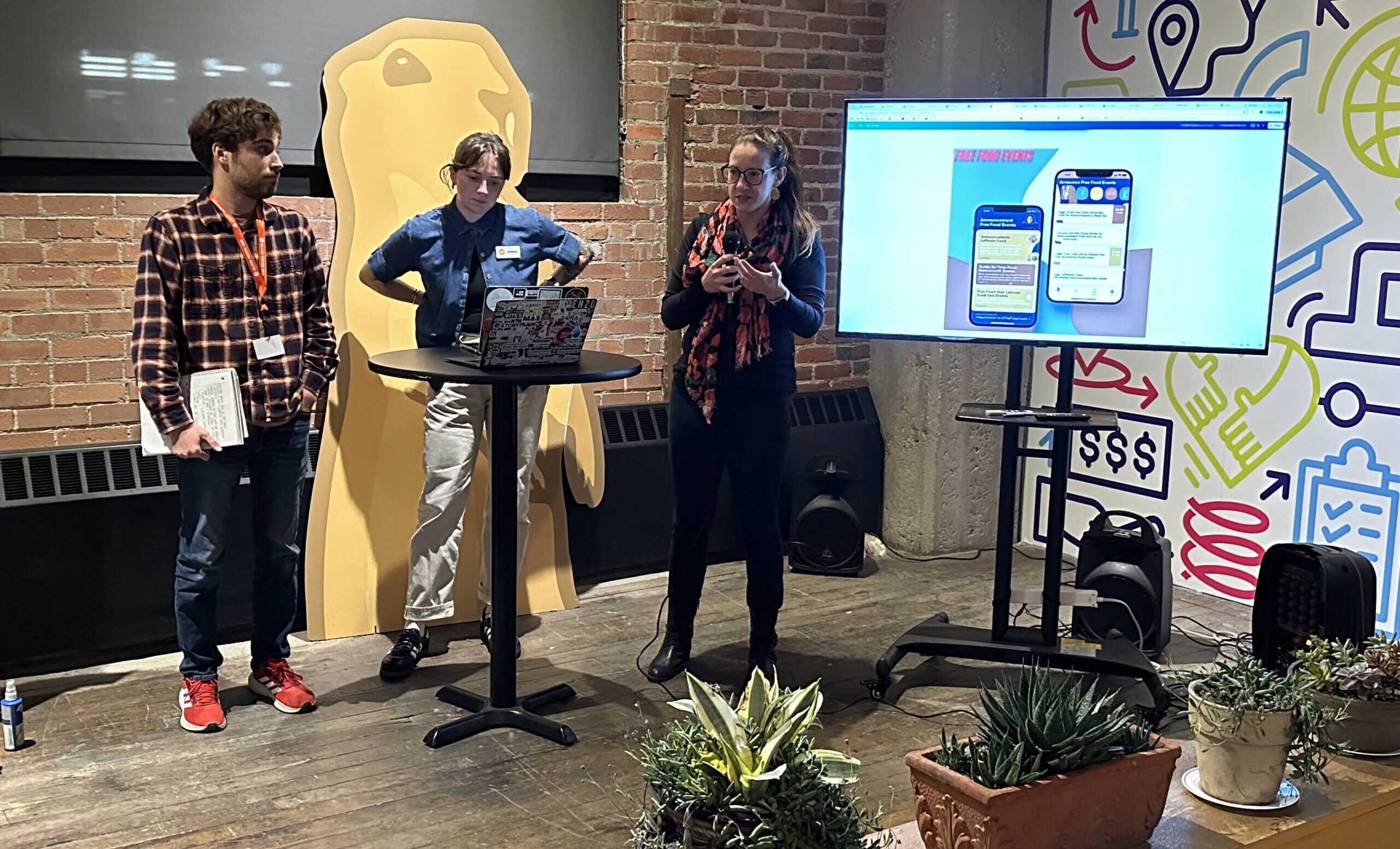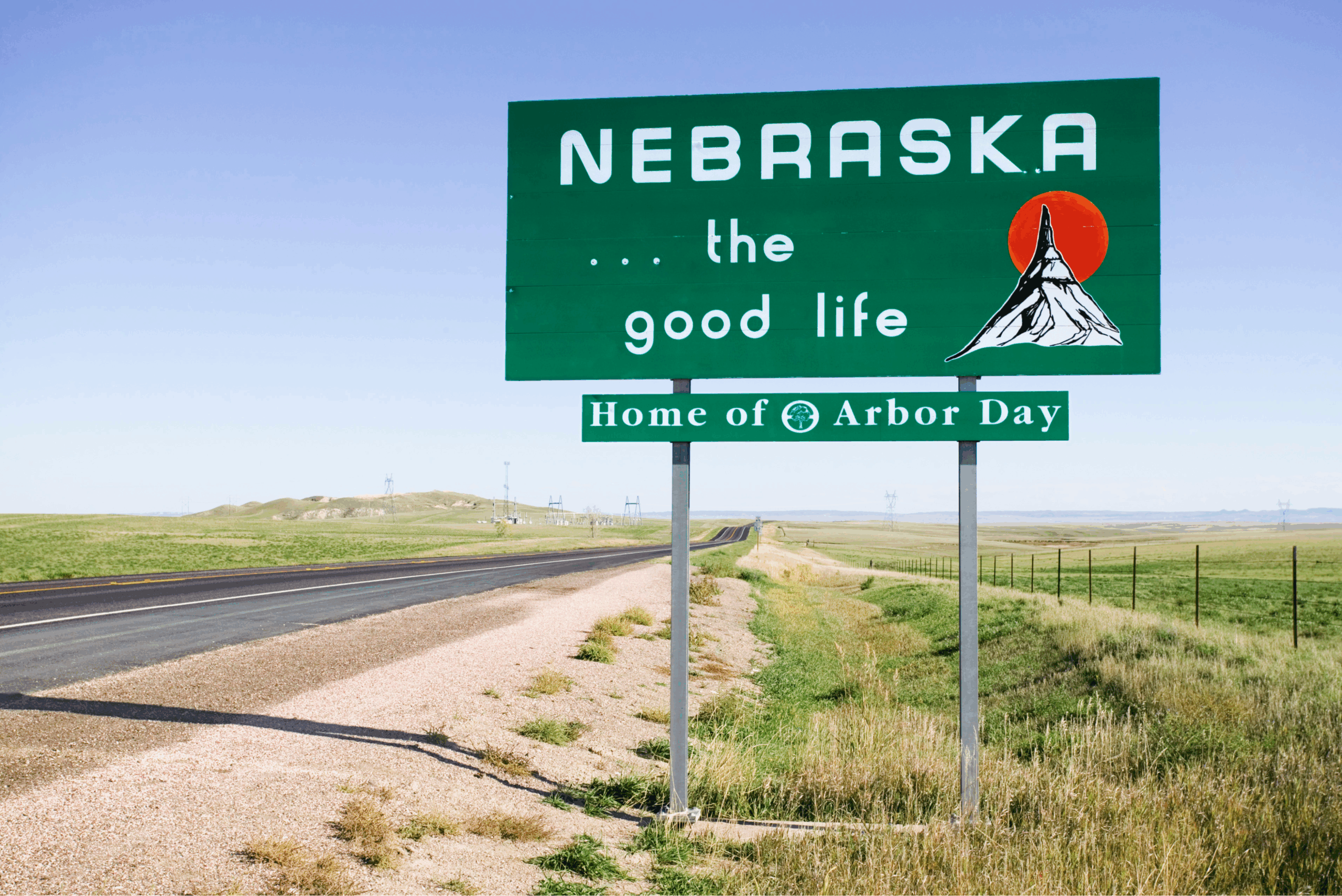A typical Saturday for me doesn’t usually involve a hackathon. But at 9 a.m., I was sitting in the lobby of the Elevator Co-Working Warehouse with a coffee in hand, wondering what on earth I’d gotten myself into. I’m a reporter, not a coder — what was I thinking?
Sure, I’ve dabbled in RStudio for data analysis, but that’s miles away from building an app. Around me, people streamed in, brimming with confidence. I imagined they were seasoned hackathon pros, tech founders, or at least people who knew what they were doing. Meanwhile, I felt entirely out of my depth.
It starts with an idea
Luckily, my coworker Ben was just as inexperienced in app-building as I was (based on the state of his randomly dying laptop, maybe even less so). But he had an idea — a great one, in fact. He pitched a food-waste tracking app that could inventory your fridge and pantry, send notifications when items were nearing expiration, and recommend recipes to use them up. It was clever, simple, and solved a real problem. And, he admitted, it all sparked from a potato he accidentally let sprout on his kitchen counter.
At 10 a.m., Scott Henderson welcomed everyone and explained the rules. The objective was straightforward: create a Minimum Viable Presentation that answers three questions: What’s the problem? Who’s the customer? What’s the solution?
Henderson then went through all the applications he recommends to create using websites/UX, simple CRM, UI, membership platforms. Then he says something about “Cocktail Napkin Schematics” using Canva or Google Slides as tools. That was music to my ears—finally, something in my wheelhouse.
By 11 a.m., it was time for participants to pitch their ideas and see who might want to work with them on turning them into reality. Ben pitched our idea while I stayed behind, silently willing people to be as excited about it as we were. After the pitches, we stood by nervously, hoping someone with coding skills would want to join our team.
Forming a team
Eventually, Amelia, a research coordinator at the University of Nebraska-Lincoln, joined us, drawn by the idea’s potential to tackle food waste. Still, none of us had a technical background, but we had enthusiasm and a plan. We named our team Potato Clock.
At noon, the real work began.
The first few hours were spent investigating the problem and researching solutions. As we dug deeper, we discovered that apps already exist that did nearly everything we had imagined. At first, this felt like a setback, but then we started to consider a different customer base.
None of us had a technical background, but we had enthusiasm and a plan.
Our target shifted to college students — a group that is known for food waste and food insecurity due to lack of planning, crowded living spaces, and irregular eating habits, as well as being on their own for the first time. We reimagined the app as a streamlined, student-friendly tool to help them save money and reduce waste. The app would offer personalized features like meal tips for busy schedules, alerts for expiring food, and easy recipes for everyday student staples like canned beans, rice, or frozen veggies. We also included where there were events on campus offering free food, plus a messaging platform where students can swap food and create meals together.
Defining the customer
By 3 p.m., we had a solid concept and some rough designs to show at the progress check. The judges gave us helpful feedback, urging us to focus on how the app would stand out in a crowded market. Taking their advice, we emphasized how Potato Clock was tailored specifically for college students, combining simplicity, cost-saving features, and gamification to keep users engaged.
The next few hours flew by. I created mockups using Canva and Artificial Intelligence. Amelia and Ben talked about what to say while pitching, including a compelling narrative about why this idea mattered. I polished up our Canva presentation, making sure each slide clearly told the story of our app.
Making the pitch
By 6 p.m., judging began. Watching other teams present their ideas was both inspiring and nerve-wracking. Some had working prototypes; others had polished pitches that seemed ready for investors. When it was our turn, we framed the food waste problem among college students, introduced Potato Clock as the solution, and walked through the app mockups we’d created and how this will improve college students’ lives.
Finally, at 8 p.m., the results were announced. Potato Clock won third place!
Looking back, the day was a whirlwind of learning, brainstorming, and teamwork. I came in feeling like an outsider, but left realizing you don’t need to be a tech wizard to make an impact. Sometimes, all it takes is a good idea, a willingness to adapt, and a team that believes in what you’re building.
Solutions to problems big and small are sprouting up all the time, all around us. But always make sure your potatoes are not.



